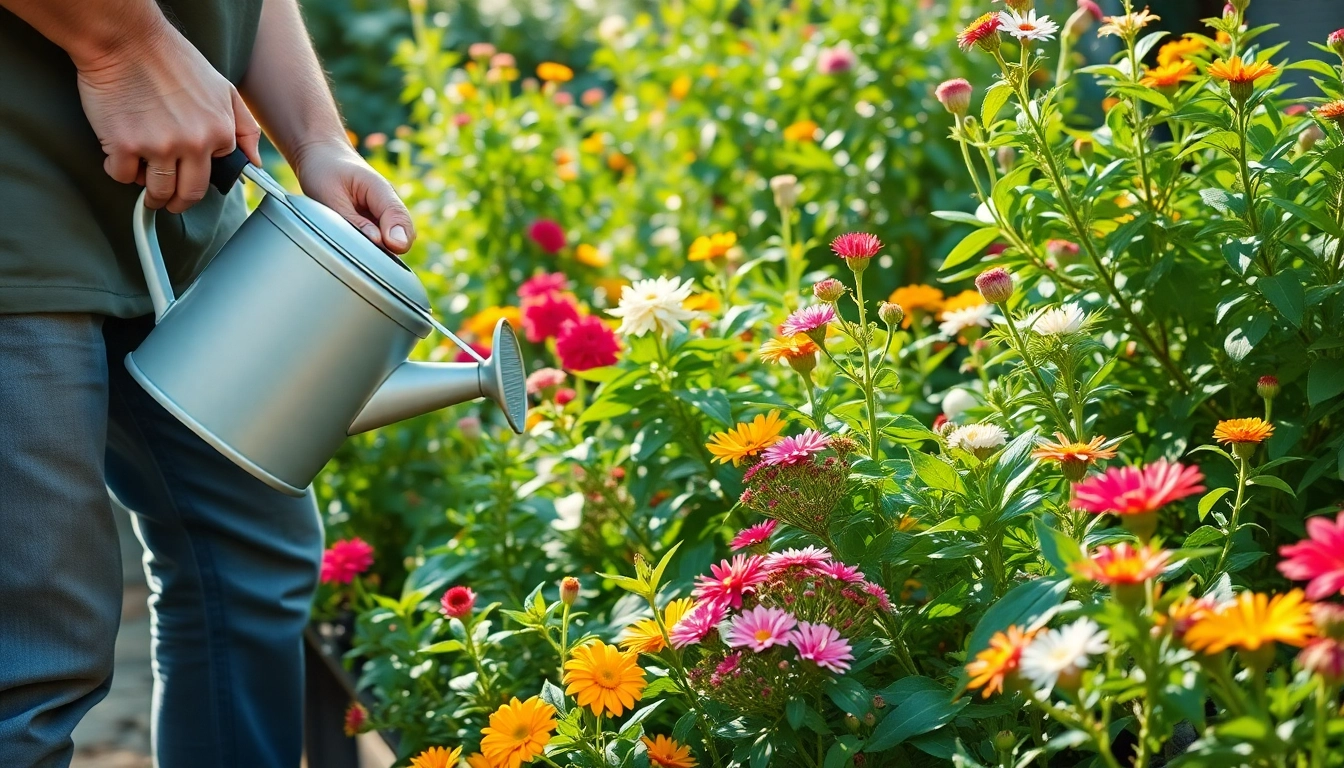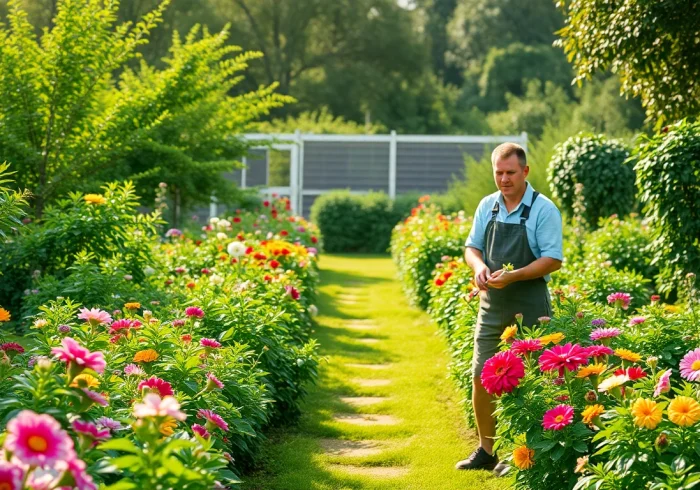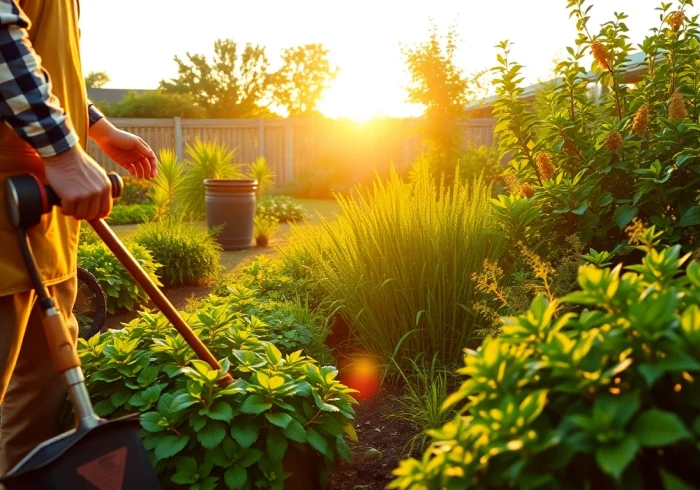Understanding Garden Maintenance Services
What is a Garden Maintenance Service?
Garden maintenance services encompass a range of tasks aimed at keeping outdoor spaces healthy, aesthetically pleasing, and thriving throughout various seasons. These services often include lawn care, pruning, weeding, pest control, and seasonal clean-ups. Homeowners can rely on professionals who possess the expertise and equipment necessary to tackle different aspects of garden care, ensuring that every plant and patch of grass receives the attention it requires. By opting for a garden maintenance service, clients can focus on enjoying their outdoor spaces without the stress of day-to-day maintenance responsibilities.
Key Features of Quality Maintenance Services
High-quality garden maintenance services often share several key characteristics that differentiate them from average offerings:
- Customized Plans: A reputable service provider will tailor their approach based on the specific needs of each garden, considering factors like plant types, soil quality, and local climate.
- Experienced Staff: Knowledgeable professionals should be able to identify plants, pests, and diseases, applying the right treatment methods to promote healthy growth.
- Comprehensive Services: Quality services span beyond simple mowing and include detailed garden management such as soil testing, fertilizer application, and irrigation management.
- Seasonal Adaptations: A good maintenance service can adapt its strategies to reflect seasonal changes in climate and plant behavior, providing ongoing care that respects the garden’s natural rhythms.
Benefits of Hiring Professionals
The advantages of hiring professional garden maintenance services are extensive. Firstly, they save homeowners significant time. Instead of spending weekends weeding or landscaping, individuals can enjoy their leisure time while experts manage the upkeep. Additionally, professional teams often bring advanced tools and knowledge, resulting in superior results compared to DIY efforts. Furthermore, ongoing maintenance can prevent costly issues down the line, such as major pest infestations or landscape degradation, making it a wise investment in the long-term health of your garden.
Common Challenges in Garden Maintenance
Seasonal Variabilities and Their Impact
Gardens face numerous challenges throughout the year due to changing seasons. Each season demands unique approaches to ensure plants thrive. In spring, for example, plants begin to grow vigorously, requiring careful weeding and fertilizing. Summer brings heat, often leading to water stress, necessitating an efficient irrigation plan. Autumn, on the other hand, signals the need for preparation for winter, including the removal of dead foliage and preventive treatments against pests and diseases, which become more prevalent as plants enter dormancy.
Pest Control Issues and Solutions
Pests can be detrimental to garden health, often quickly multiplying and damaging plants to the point of no return. Regular monitoring is crucial for early detection. Common pests include aphids, beetles, and caterpillars, each requiring specific management techniques. Solutions include applying organic or chemical pesticides judiciously, introducing beneficial insects like ladybugs, and practicing good cultural controls like crop rotation and open space management to limit pest habitats.
Managing Plant Health and Soil Quality
Healthy plants start with quality soil. Garden maintenance involves regular soil testing to check nutrient levels, pH balance, and moisture content. Based on these tests, garden professionals can amend soils with organic matter, fertilizers, or pH adjusters to enhance plant growth. Moreover, practices like mulching can help retain moisture, suppress weeds, and gradually improve soil structure over time.
Best Practices for Effective Garden Maintenance
Regular Pruning and Trimming Techniques
Pruning is essential for promoting healthy growth and increasing the longevity of plants. By removing dead or diseased branches, gardeners can enhance air circulation and reduce disease spread. Additionally, trimming encourages fuller growth in flowering plants by redirecting energy to healthier parts. Techniques vary across plant species, so it’s crucial to understand the correct methods for each type, ensuring cuts are clean and well-placed.
Watering Strategies for Optimal Plant Growth
Proper watering practices are vital to maintaining a garden’s vitality. It’s important to adopt a consistent schedule, ideally watering early in the morning or later in the afternoon to minimize evaporation. Deep watering less frequently encourages deeper root growth, making plants more drought-resistant. Furthermore, incorporating a drip irrigation system can enhance efficiency by delivering water directly to the plant roots, reducing waste and disease risk.
Choosing the Right Tools for the Job
Employing the proper tools can greatly affect the ease of garden maintenance. Essential tools include pruners, shears, a hose or irrigation system, and a quality rake. Investing in high-quality tools can reduce effort and improve results, allowing for efficient tackles on various tasks like mowing, edging, and weeding. Additionally, safety equipment should not be overlooked, as it ensures both comfort and protection while working in outdoor spaces.
DIY vs. Professional Garden Maintenance Services
When to Opt for Professional Help
While many garden tasks can be tackled DIY-style, certain situations necessitate professional help. Homeowners with large plots or gardens filled with intricate plant arrangements may find it hard to manage everything without assistance. Specialized tasks such as designing a garden layout, addressing severe pest infestations, or conducting extensive landscaping often require expert knowledge. Additionally, those with limited time or physical constraints are likely to benefit significantly from hiring professionals.
Cost Considerations for Homeowners
Understanding the costs associated with garden maintenance services is essential for homeowners. Costs can vary based on service frequency, garden size, and market location. Typically, homeowners can expect to pay for landscaping services on an hourly basis or via seasonal packages. It’s crucial to obtain quotes from several services and clarify what’s included in these prices, ensuring there are no hidden fees. Long-term, investing in professional services can ultimately save money by preventing larger gardening issues from developing.
Combining DIY Efforts with Professional Services
Many homeowners find that a hybrid approach works best. Regular tasks like mowing and weeding can be handled personally, while professional help can be called in for more technical gardening challenges. This combination allows homeowners to save on costs while still ensuring that their gardens receive exacting attention to detail when required. Establishing a plan that balances personal efforts with professional support can lead to a thriving outdoor sanctuary.
Measuring the Success of Your Garden Maintenance
Indicators of a Healthy Garden
Measuring the success of garden maintenance efforts involves assessing several key indicators. A lush lawn, vibrant flowers, and robust vegetable plants are clear signs of effective care. Additionally, low pest levels, deep root systems, and minimal weeds also signal proper garden health. Regularly monitoring these factors allows for proactive adjustments to maintenance practices, enhancing long-term success.
Customer Feedback and Testimonials
For those considering garden maintenance services, evaluating customer feedback can provide critical insights. Testimonials often highlight the reliability and effectiveness of service providers. Companies that have garnered consistently positive reviews likely possess the experience and expertise needed for quality garden maintenance. Engaging with past clients can also reveal any potential concerns or additional benefits not readily visible on a company’s website.
Long-Term Maintenance Planning
Developing a long-term maintenance plan is vital for sustaining a healthy garden. This involves setting seasonal goals, scheduling regular assessments, and adjusting strategies based on changing conditions. Gardeners should not only plan for immediate tasks but also anticipate future challenges, allowing for proactive rather than reactive measures. A well-structured plan can lead to a thriving garden year after year.



